Whenever I run into people who have “The Life” dialed in — living in a beautiful place, skiing a ton, always seeming to be happy — my first instinct (as someone who aspires to become one of them) is to find out a) how and why they ended up in their chosen location, and b) how they manage to stay there. While visiting Wyoming two months ago, I got in touch with Bob Peters, whom I first met in February 2004 while he was guiding a group of us who had met via EpicSki around Jackson Hole. Although we only spoke briefly back then, it was hard not to be impressed by Bob’s encyclopedic level of knowledge about his home mountain as well as his willingness to share this passion and expertise with others (as Exhibit A, please see his popular and oft-photocopied “Unofficial Guide to Skiing Jackson Hole,” conveniently divided into intermediate and steeper versions).
I made a mental note at the time that it’d be interesting to sit down with Bob for an hour or two and hear some of his stories of skiing at Jackson Hole before it had been “discovered” and to learn about the changes that have occurred there over the past four decades. Although seven years had passed before I finally made that happen, I think that it was worth the wait. Instead of meeting over beers at the Mangy Moose, we decided to talk while riding the lifts between 3,000+ vertical-foot runs. Following is a short visit to one man’s paradise.
How and when did Jackson Hole enter your life?
I grew up in Iowa and had never even thought about skiing until I was a freshman at college in 1967. A fraternity brother had a subscription to Ski Magazine, and that fall, I was looking through his pre-season issue and thought “Hey, that looks kinda fun!” A couple months later, during Christmas break, I found out that there was a small area outside Des Moines named “Ted’s Ski Hill,” so I talked a few friends into going there and we loved it! Keep in mind that the hill had a total of 90 vertical feet served by a rope tow and that we were on 210-length wooden skis with cable bindings and leather boots.
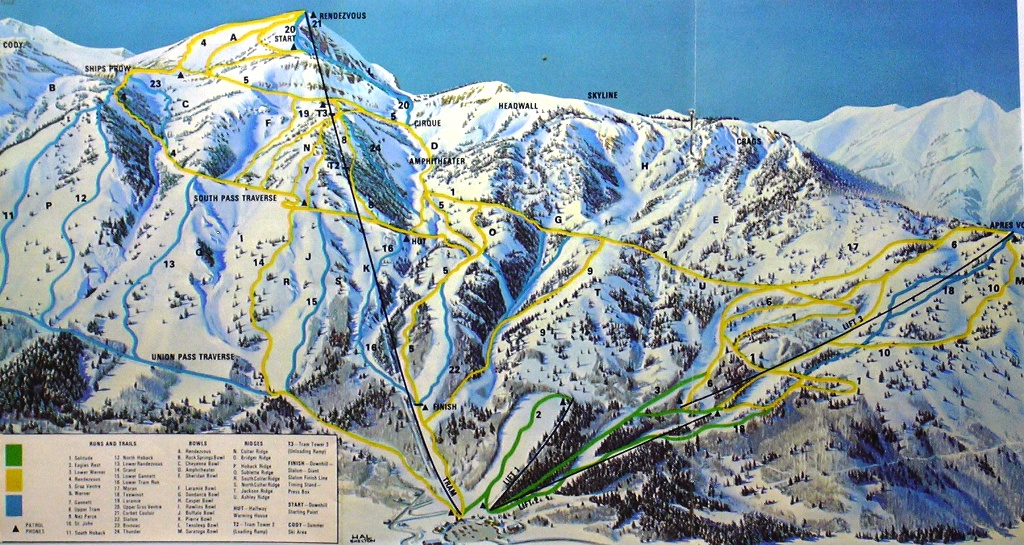
We skied a few more weekends that winter and the following season, in 1968, we went to Winter Park, Colorado. I remember driving into the parking lot, looking uphill and thinking, “Holy cow, that looks steep!” The entire vacation, we flailed all over the mountain, but still had a great time. By early 1969, I had read about this new resort, Jackson Hole, so we drove out for spring break, arrived on Saturday night, and were skiing the next morning on Apres Vous. It had snowed like crazy, and back then, they didn’t have any grooming, so you can imagine four virtual beginners from the flatlands skiing in those conditions on that level of terrain. Regardless, within three hours of our first run, we decided that we were ready for the tram!
We went up and got out at the summit in a howling blizzard. Luckily, there were two other skiers in the tram with us, so we followed them to Rendezvous Bowl. Thank god for them because we had absolutely no idea where to go. There was very minimal signage in those days and even if there had been more signs, we wouldn’t have been able to see them because of the low visibility. It must have taken us 45 minutes to pick our way down Rendezvous Bowl.

Eventually, we arrived at the top of Amphitheater, where the clouds broke enough and we could see the valley below. All I could think was, “This place is unbelievable.” At that very moment, I became a fan of Jackson Hole.
Did you get back on the tram?
Well, after making it to the bottom, the general consensus was that we needed to work on our technique a little bit before going back up to the summit, so we returned to the top of Apres Vous, where I promptly broke my leg (a fractured fibula). Of course, the rest of the week, the weather was gorgeous and my friends had an incredible time while I cooled my heels at the Mangy Moose and Nick Wilson’s. Thus, on my first trip to Jackson Hole, I skied a total of maybe five hours.
The following years at college, we went to Colorado again, then Utah, and one year, I took the winter off from school and ski-bummed in Aspen. Fast forward to autumn 1974, a college friend who had just gotten out of the Navy decided that he wanted to buy property at a ski area, so my wife and I joined him and drove west to start looking in Colorado, which is what most people considered to be “ski country.” It was the middle of the night; I was at the wheel and the two of them were asleep. While driving on I-80 in western Nebraska, there’s a point where you can either continue on that highway through Wyoming or you can take take I-76 to Denver and eventually all the popular mountains along I-70. I started thinking about that spring break in Jackson Hole five years earlier, when I broke my leg, and how much I wanted to go back there. A few hours later, my friend woke up and asked “Are we in Colorado?” I told him very matter-of-factly that we were in Wyoming, on our way toward Jackson Hole. He didn’t seem upset about my unilateral decision, so I kept on driving.
That was the year they were planning to build the Casper lift and the ski area owner, Paul McCollister, needed money to finish the chair. My friend ended up buying two lots and we later bought one lot from him. As part of the purchase, the three of us received lifetime season passes from Jackson Hole.
Did you move to Jackson immediately?
No, at the time, I was a farmer in Iowa, so I was conveniently able to come ski here during the winter months. Coincidentally, my wife — who had ski-bummed at Aspen the same winter that I was there — had never been to Jackson Hole. I still remember our first visit , which was during the off-season, and after hiking up the mountain, she said, “It looks really steep,” to which I replied a bit disingenuously, “Don’t worry; during the winter, the snow will flatten it out a bit!”
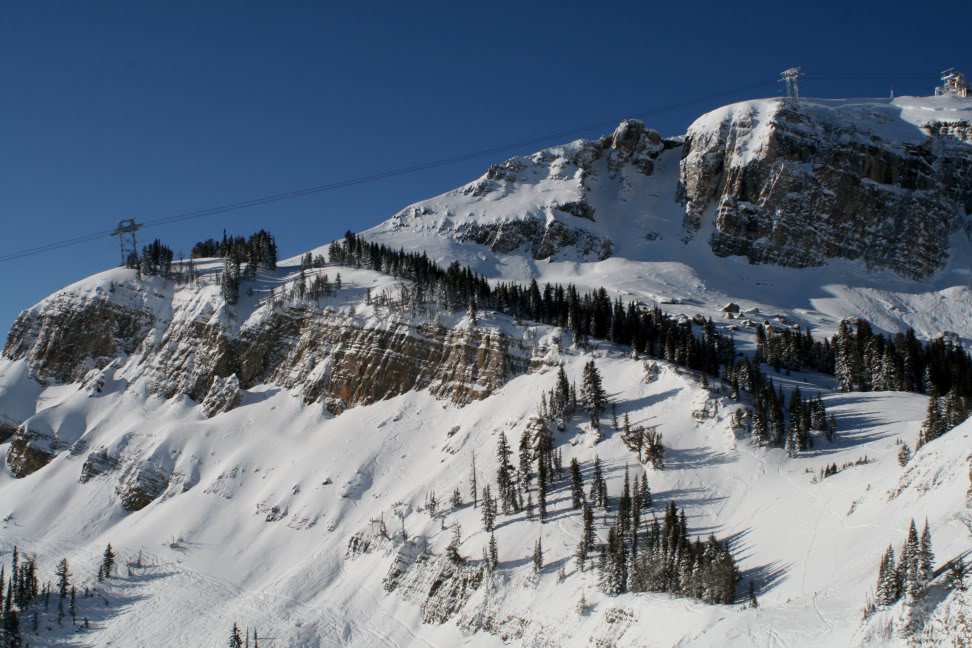
The following ski season, the winter of 1975-76, we came out and spent four weeks, and just like my previous visit, nothing was groomed. So after falling on Apres Vous one day in deep and heavy snow, my wife broke down in tears and said, “I hate this place! I can’t ski here! There’s so much snow and it’s never groomed! We never should have bought property here!” You could say that she wasn’t quite as enamored with the mountain as I was. Of course, a few years later, she figured out how to ski deep snow and negotiate the steep terrain here, and now she’s the biggest Jackson Hole advocate you’ll ever meet.
At what point did they actually start grooming?
They started in the early 1980s, and got much better at it when the Kemmerers bought the resort in 1992. That’s when they began spending a lot of money on all aspects of the mountain. Today, I think that Jackson Hole’s grooming is as good as anywhere in the country. In addition, a couple decades ago, only a very small percentage of skiers were going off-piste; however, today’s ski equipment allows a far larger number of people to ski all over the mountain. This, of course, leads to a good portion of the inbounds snow getting tracked out in a few hours, but that’s the same at most major mountains.
How long did it take before Jackson Hole started to be considered a world-class ski area?
There’s a popular story — it may be a myth, but I’ve heard it for decades — that when they were first planning the resort in the mid-60s, they brought in a famous ski-area consultant named Willy Schaeffler (he worked on Vail, Squaw Valley, and Whistler among others) to design where the trails would go. They were trying to ski Amphitheater and, as the story contends, there was so much snow, the group got stuck. They allegedly couldn’t move and, incredible as it may sound, Schaeffler’s original opinion was that Jackson Hole wouldn’t make a good ski resort because it was “too flat,” which is a bit ironic considering the reputation the mountain has to this day.
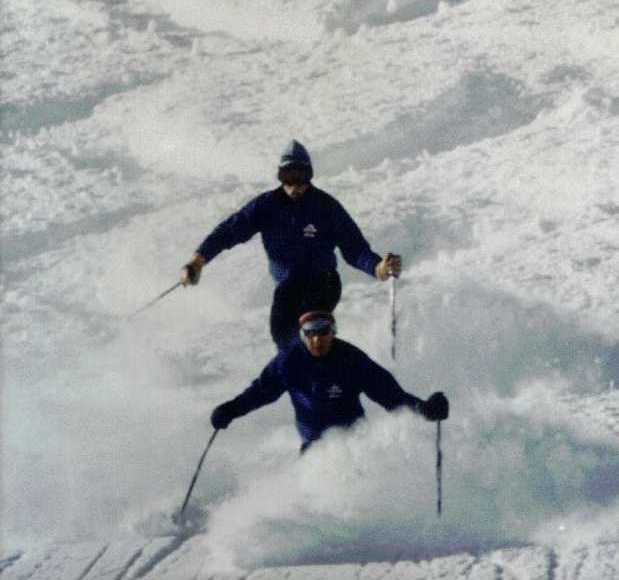
I think it was in the early 1980s that word started getting out about the kind of terrain we had here, and Jackson Hole began appearing in ski movies. That was also when people started hearing about the kind of out-of-bounds skiing that few other mountains were offering at the time. Here, you could hire a guide from the resort to take you back there.
These days, everyone complains that the typical ski-resort model is all about the real estate, but was it any different when you first arrived here?
Real estate played a big role back then too. Paul McCollister had to sell a lot of property, often at cut-rate prices, so he could afford to buy infrastructure for the ski area. To be fair, it was the same at many other places; in fact, my wife and I have a good friend who owns Lot 1, Plat 1 at Vail.
Were there ever concerns that Jackson Hole wouldn’t attract enough of a clientele to be a viable business?
That was a constant worry — Paul was always barely ahead of his debts. He would sell some property so he could afford a lift, then he’d sell another piece of property to buy a groomer, construct a building, and so on. That’s why today the ski corporation doesn’t own very much of the property in Teton Village. I think that there were at least a couple times when the resort was close to going under, but luckily, it received support from the town of Jackson because it brought people in during the winter. By the way, about ten years ago, a fantastic coffee-table book was published called Jackson Hole: On A Grand Scale. It provides a pretty detailed history of the ski area, so if you’re interested in learning how the many moving parts developed over the years, I can recommend it.
Today, some might claim that Jackson Hole has the opposite problem, that it’s becoming too popular for its own good.
It may have been around the early 80s when Jackson Hole first passed 200,000 skier days per season, amazingly enough. All I remember is day after day of powder and riding the tram with just a few other people. Of course, the mountain is busier today than 20 or 30 years ago, but compared to most world-renowned destination resorts, we get a low number of skier visits each season; I think it’s around 475,000. Many ski areas, even in the midwest, get several times that.
I’ve never agreed with the perception that Jackson Hole is getting too popular, and I feel very strongly against closing the door to others just because we’re already inside the barn, or whatever that expression is. Not to sound like the chamber of commerce, but the reason I’m here is that this is one of the greatest ski mountains in the world, and during the warm-weather months, there’s climbing, fishing, hiking, horseback riding, mountain biking; it goes on and on. But even during the busiest part of the year, late July, you can drive one mile to Teton Park, walk 500 yards from your car, and you’re completely alone! So to answer your question, no, I’m not overly concerned about whether it’s become too popular. I came here in my early 20s, and I don’t believe in the idea of setting up road blocks to new people today just because they were born several decades later.
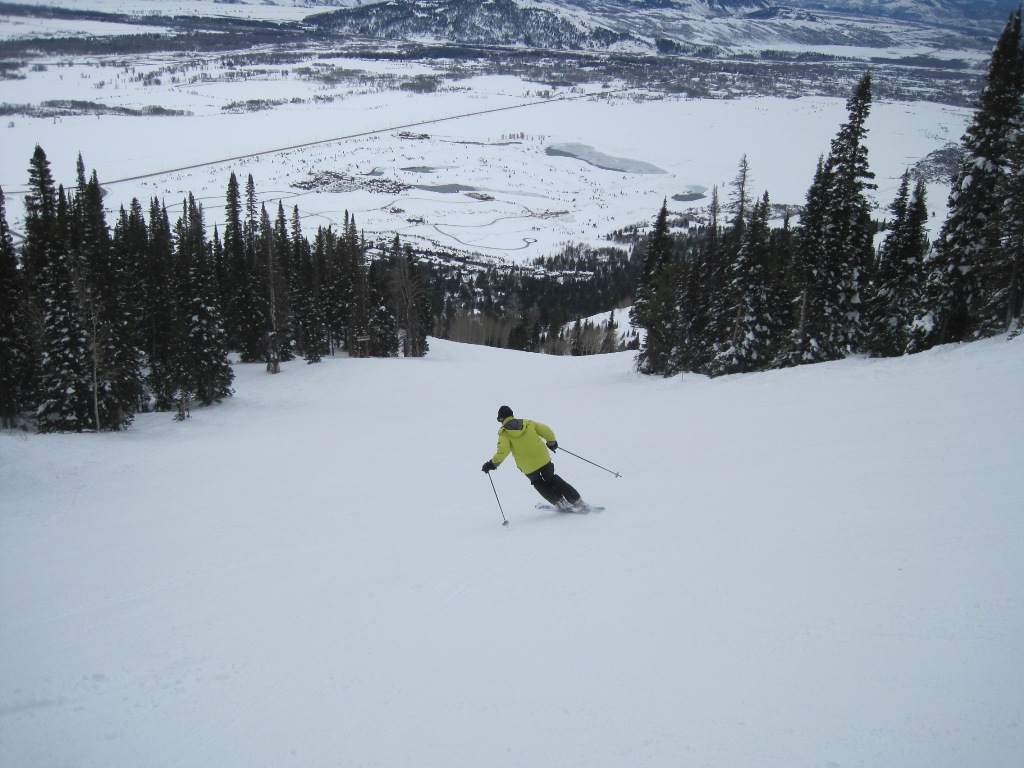
What has kept Jackson Hole from getting Vail- or Breckenridge-levels of destination skiers?
The rap on Jackson Hole practically since it first opened was that it was too cold and too tough a mountain for many recreational skiers, and that there was no nightlife, shopping, or fine dining in the base village. The ski corporation tried many strategies to overcome these perceptions including using the advertising tagline “The Gentle Giant” for several years. I think part of the problem is human nature; people come here precisely because of its reputation as an “expert” mountain. After returning home, they want to tell their friends how gnarly it is rather than how civilized it can be.
When the Four Seasons Resort opened a few years ago and was subsequently voted the best ski hotel in North America, it brought in a whole new clientele. Now, not all of these visitors necessarily turn into repeat customers, but it does attract people who previously wouldn’t have even given Jackson Hole a second thought. On the other hand, many hardcore skiers might say, “oh, they’re trying to sissify the mountain,” but from the perspective of someone who’s skied here for several decades, you may get uphill a little faster today and the grooming is certainly better than when I first arrived, but it’s still the same mountain. That killer terrain is still here. All you have to do is go find it.
I’d assume that the cost of living puts a ceiling on the number of people who can move here.
No question. When we bought our first house here in Jackson, it cost $189,000, which was not a small piece of change back then. The last time it was sold, that same house went for $4.4 million! It’s a hard place to live from a housing affordability standpoint. That said, I have a bunch of friends who were all ski bums, and we arrived here at more or less the same time. We now own businesses or have found good jobs in Jackson, and lead a life that we love. None of us had trust funds or were independently wealthy; we all figured out ways to make it work here. So I think that if someone really wants to move to Jackson and is prepared to sacrifice certain things at first to make it happen, it can be done.
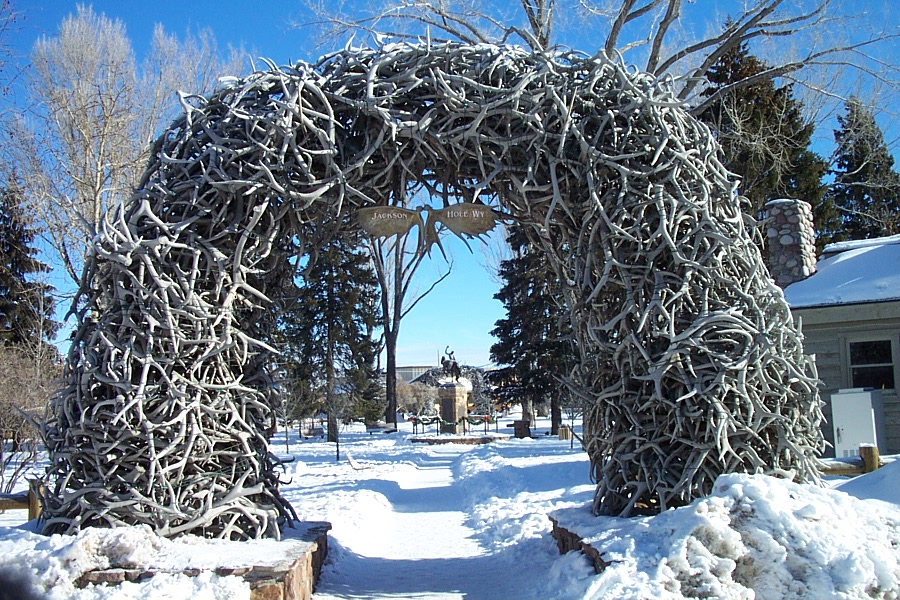
Earlier, you mentioned being a lifetime Jackson Hole passholder. I’m sure you’ve heard that back east, Killington’s newest owners successfully voided the lifetime passes that were given out by an earlier owner.
Yes, I’ve heard about that, but the language that accompanied our passes was much different. It was incredibly minimal. The letter from the resort basically consisted of one sentence — “The undersigned is hereby entitled to free unlimited use of Jackson Hole Mountain Resort’s uphill facilities for his/her lifetime.” Below that, it said “non-transferable after first use.” That was it! But a few years later, maybe around 1980 or 81, Paul McCollister, the founder and original owner, tried to institute a new policy whereby after buying a lift ticket, you were charged an additional two dollars for each tram ride. Not only did he want to charge people who had bought day passes, but also the lifetime passholders! Within a day or so, Paul received correspondence from several members of our group, which included a few attorneys, who diplomatically reminded him about the very precise wording from those original letters (particularly the “free unlimited use” part), and that was that: no tram charge for lifetime passholders.
How many of the lifetime passholders are still active here?
Many are still alive, but only five or six from the original group of 200-something still ski here on a regular basis. My wife and I are two of them.
How did you become a Jackson Hole backcountry ski guide?
Back in the fall of 1979, there were four alpine backcountry ski guides who worked for the ski area, and I heard that one of them was quitting, so while I was farming in Iowa, I sent my resume to ski school director, Pepi Stiegler. I mentioned that I had first-aid and avalanche training and that I had taught a few winters for the Red Cross. To this day, I still can’t believe that he hired me!
I guided for the next seven winters and for quite a few of them, the only way you could officially go out-of-bounds was by hiring a guide. If the ski patrol thought that there was serious avalanche danger, we couldn’t ski it either, so we weren’t there every single day or during big storms. Sometimes, the patrol would allow us to check things out before bringing clients in. You can imagine these huge expanses of terrain, 2,000-3,000 acres, that were seeing virtually no traffic, and access was so easy — we just took the tram up, skied out the boundary, and came back to the base 4,000 vertical feet later.
As poaching out-of-bounds terrain gradually became more of a problem in the mid/late 1980s, Jackson Hole tried a few different policies. One winter, if you had the necessary equipment, you could sign out with the patrol at the summit. Another winter, they’d let people go out-of-bounds if the avalanche forecast levels were considered moderately safe; however, none of these policies worked well, because allowing people to go in the backcountry at certain “approved” times opened the resort up to all sorts of liability issues. It was a real struggle for many years and I believe that it was 1996 when Jackson Hole finally opened the gates and said, “do whatever you like; from this point on, you’re responsible for your own safety, not us (i.e. being properly prepared with equipment and knowledge).”
Looking back a few decades years later, do you sometimes shake your head about your days as a BC guide and say, “I can’t believe we used to do this or that?”
Yes and no. The first years I was working as a guide, we didn’t even have avalanche beacons for clients. What we had was extensive avalanche snow safety training whose basic message was: “Don’t put yourself into a position where you might get buried, because it’s highly unlikely that you’ll survive.”
Another thing to consider was that back then the backcountry got a tiny fraction of the traffic it gets today; thus, the snowpack was, in general, a lot less stable. Nowadays, even during storms, it gets skied so much that the many layers get mixed quicker and more thoroughly, and big slabs don’t tend to form as often. You also have to remember that at the time, going out-of-bounds for fresh tracks wasn’t really a necessity because you could often find untracked snow in-bounds for many days after a storm. Thus, a good portion of my guiding was within the ski area boundaries. We’d only go out-of-bounds several days later after the in-bounds terrain was tracked out and the new snow had had time to stabilize.
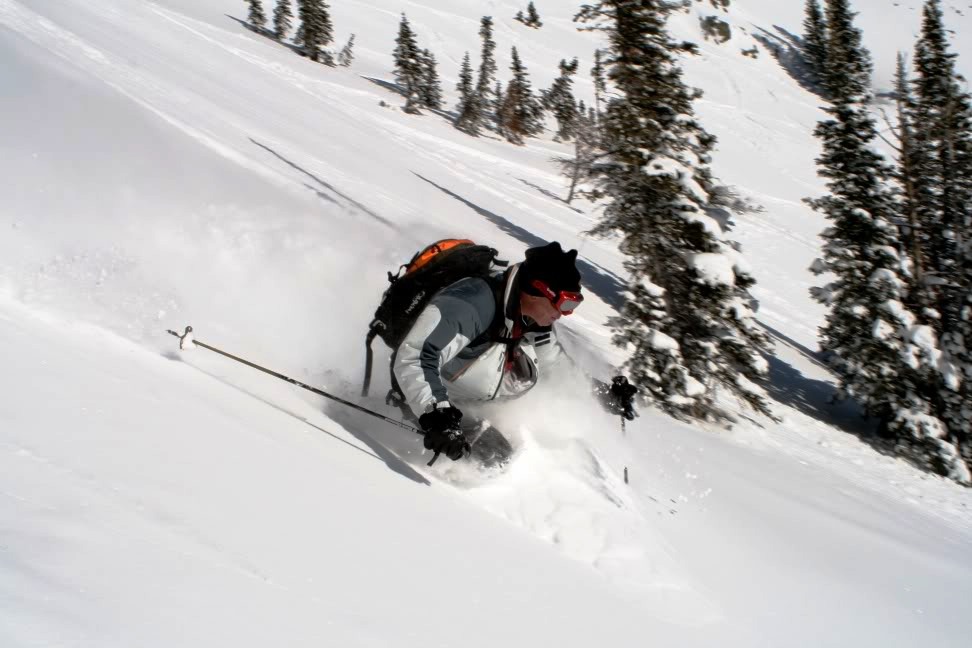
Finally, another important part of the equation was that it was comparatively rare to find people who could really ski powder at Jackson before the advent of powder skis. This goes back to my point about today’s equipment allowing people to do things that weren’t possible for “mere mortals” back in the day.
To my knowledge, none of the Jackson Hole guides I worked with got into significant trouble in the backcountry. We heard about slides taking place, but not under our guidance. Personally, I can count about 15 friends who’ve died in avalanches over the last 30 years, and I’ll tell you with all honesty, the thought of being buried in snow absolutely terrifies me. For that reason alone, I’m very conservative about where I go and the conditions under which I go there.
Didn’t you say that there was a period during which you lived in Salt Lake City?
Yes. I realized that farming was a great lifestyle choice in that it gave me a lot of time to ski, but it wasn’t an exceptional way to make money. I stopped guiding because I got a “real job” with a telecommunications company, which took me to Salt Lake City from 1996 to 2002.
What brought you back to Jackson?
The primary reason for returning to Jackson nine years ago was the dotcom bust and the subsequent collapse of the telecommunications company I had been working for in Salt Lake City. The chances of someone in my demographic group finding a similar level of job in that city (or any other) weren’t good at the time, but more importantly, we had always considered Jackson our real home and wanted to retire here, so we moved back. I got a real-estate license, and together with my business partner, former U.S. Ski Team member Andy Chambers, we founded North 40 Realty.
This must be an interesting place to work in real estate.
It is. Teton County, Wyoming comprises many millions of acres, but more than 97% of it is public land, meaning it’s designated as national forest, national park, state of Wyoming, or Bureau of Land Management land. This leaves less than 3% of it in private hands and available for development. Of that, more than 15,000 acres has development restrictions in the form of conservation easements. In short, this means that developable land is extremely limited, which translates into higher prices. It also means that our valley’s footprint doesn’t look enormously different than it did 20 or 30 years ago, nor will it look much different 20 or 30 years in the future. It’s nothing compared to the Vail or Park City corridors, where most of the surrounding land is private.
Moreover, Wyoming has no sales tax and the fewest number of residents of any state in the U.S., but at the same time, the state has extensive revenues in the form of gas, oil, and coal payments, making it fiscally very stable. There’s about a billion-dollar surplus in the treasury, which is extraordinary, especially these days. Still, property taxes are roughly $6,000 on a million-dollar valuation, which is a third to a quarter of many other areas nationwide.
What’s your firm’s niche?
Our specialty is representing people who are trying to buy property, not sell it — we’re buyer’s agents. In the real-estate world, there’s a peculiar situation that potential buyers need to be aware of, which is when one salesperson at a large company has the property listed and another salesperson at the same firm is trying to sell it. For both of those people (known in the business as “intermediaries”), their ultimate goal is to expedite the transaction, rather than to get you, the buyer, a better deal. This happens more often than you’d think. Because we’re a two-person firm dedicated to representing buyers, we’re able to perform a high level of due diligence and negotiate fiercely for buyers because there’s no conflict of interest. Our only responsibility is to our buyer.
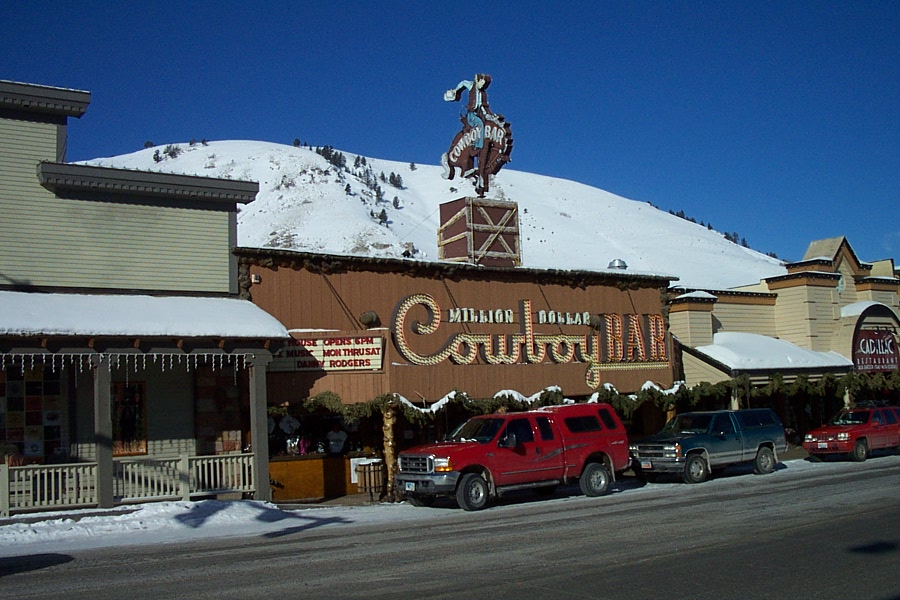
In addition, as diehard skiers and outdoors people who love the Jackson region for everything it offers, we intimately understand the mindset of people who want to relocate here, and can give them the benefit of our personal experience over several decades here, which I believe provides our clients with additional value.
How have prices changed after the nationwide real-estate bubble burst?
In the “lower end” of the Jackson market (under $700,000), they’ve gone down significantly, about 25 to 35%, but they’ve changed very little in the upper end of the market.
In addition to being a realtor, you’re also a part-time by-request instructor. Does teaching at a mountain like Jackson Hole present any unique issues, such as people who feel obligated to ski terrain that they’re not ready for?
I’m sure that’s something instructors encounter at many mountains, but yes, because of its reputation, people often come here with the old “I can do double-blacks at my home mountain; I can do them here” mindset. They don’t want to go home and say that they only skied the blue terrain. While that’s psychologically understandable, many realize only when it’s too late that the top-shelf terrain at Jackson Hole means business. There’s no question that I see a fair amount of visitors come here with a limited ability to use their edges to shape turns or control their speed, and when skiers are lacking those kind of fundamentals, they will run into trouble when they go onto significantly steeper, bumpier, narrower, and exposed terrain, along with really varied snow conditions — all of which they’ll encounter at Jackson Hole.
What about the perception that destination skiers shouldn’t book at Jackson Hole after, say, mid-February, due to its terrain orientation and elevation?
This is something I’ve heard many times and is, in my humble opinion, woefully inaccurate and simplistic. Jackson Hole has so many elevations, facets, aspects, and exposures that skiers with any knowledge about where the sun will be shining at a certain time of the day can get great skiing here all the way through early April. Not only is the spring skiing fantastic, but some of the best powder skiing I’ve ever experienced — and I’ve done a lot of powder skiing — has been in March and early April.

Final question: what’s your opinion about the “this mountain is like nothing you have skied before” warning at the tram dock. A couple friends of mine from Europe cracked up when they saw that sign.
Funny, I never thought about it that way, but you’re right! I’ve skied in the Alps, and many of the areas there are absolutely gigantic, both in vertical and in expanse. As big and wild as this ski area is, you could fit multiple Jackson Holes inside many of the larger European resorts. Just goes to show you that everything depends on your frame of reference!
Credits
1969-70 trail map provided by skimap.org.
1980s trail map cover provided by teachski.com.
Amphitheatre, Expert Chutes, Powder 8, Pinedale Canyon, and Toilet Bowl photos provided by Bob Peters.

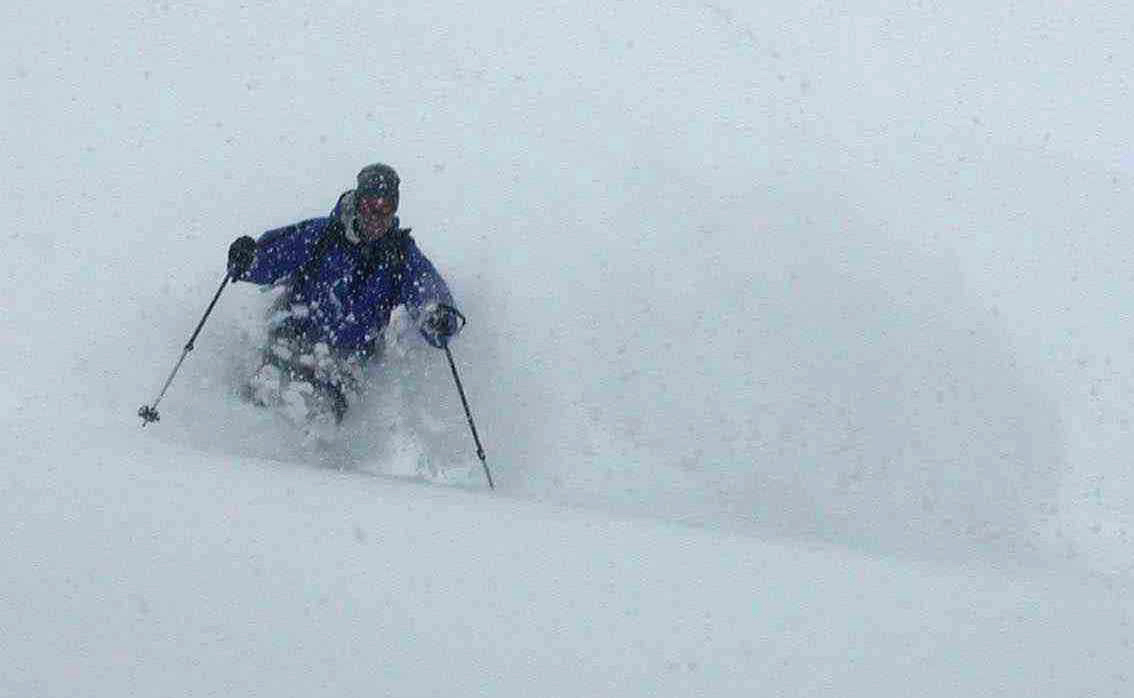
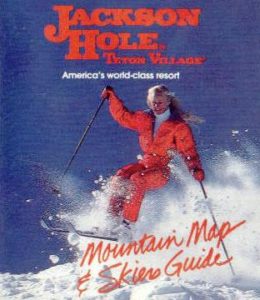
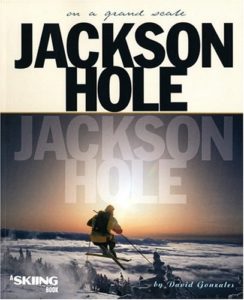
Wow….simply WOW!!!
That was an amazing piece James. I was privileged to ski with Bob Peters for one afternoon with probably the one that he refers to as woefully inaccurate and simplistic.
You could have asked him about HIS ski streak.
Love the story about Bob’s wife.
I haven’t been to Jackson Hole in winter, but you’d have to live in a cave not to know about the mountain’s reputation for challenging terrain.
Bob’s life seems like a good proxy for the history of Jackson Hole.
Thanks for the education James. Great article.
This guy’s got the life. He moves FROM Salt Lake City because he’s got somewhere better to ski.
Luv the 1969 map… Rendezvous access only by tram. Musta taken forever for it to get tracked out back then.
Finally had some time to read this.
Bravo James
It was very cool to get the perspective of someone who has been there so long and who had made such a great life for himself.
Every time I go on a ski vacation, I dream about moving there.
Last year I realized that SLC isn’t a city I want to live in, even if the skiing is just 20 minutes away and has the greatest snow on earth. Living in Jackson is more appealing, but I do not have the means to live there, or find gainful employment there. I’m going there this summer to visit the National Parks with my mother, and I will take another good look at Jackson.
I don’t think I’ll leave my beloved upstate NY paradise though. Last night my mother pointed out that you live where your people are. I do have friends in Jackson and SLC, but my real people, the ones whom I love dearly, family and close friends, all live here. And living here makes going on vacations to other ski destinations all the more sweet. My friends in SLC rarely, if ever, go ski anywhere else.
Love the article, although I’m only about 5 years in, its cool to see what the perspective is like from back in the day.
Powqueen, dont let reservations hold you back. I feel often that people tend to think that Jackson has nothing but service jobs bussing tables and tuning skis, when in reality its just not true.
With all the money flowing around theres plenty of real world type jobs and careers to be had. While it might not just appear the second you arrive here, if your patient the right opportunity will always present itself. I started out in F&B Management for the Four Seasons, and now Im an accountant here. Finance types have options, banking, etc. People still need to do the everyday things like buy food to eat, have their car repaired. About the only thing I haven’t seen much of out here is manufacturing, but you could always parlay that into something useful out here.
Housing can be owned for 400k for a ranch house on its own .2 acre lot and the skys the limit from there. Condos start below 200 in town. Those are attainable numbers for a middle class family. Not the cheapest in the world, but attainable.
Great article, I will have to re-read.
Just because ski bums could do jackson in the 70s though doesn’t mean that it’s doable now, in terms of working your way up to buy property (all anecdotal evidence aside).
Also, I think the avalanche figures are misleading. Many of the biggest snow safety experts have spent the last few years downplaying skier traffic as a means to control avalanches. I would be very curious about the burial rate then and now in Jackson. Many fewer people were traveling back there, but just how many were injured?
Great interview though. Interesting enough to come back for more, for sure.
Thank you so much for the great interview! I remember my days skiing at JH with Bob Peters very fondly… some of the best ski days of my life! Bob is a JH legend and all around great dude. Truly one of the best ski bums (who isn’t really a bum at all!) and nicest guys that I’ve ever met. He is a true mountain ambassador.
An aside – I found your article because I just referred one of my co-workers to go skiing with Bob and we got in touch with him and he’s still at it, so happy to hear! But in case you are curious as to why you had a random comment on your website many years later… I was googling for resources to show my coworker how awesome Bob is!! haha… anyways rock on 🙂 !! ) Cheers, Courtney aka Beandip4all from the TGR forums